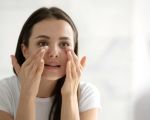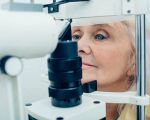- 1-Understanding-Eye-Strain-In-Digital-Artists
- 2-Common-Causes-Of-Eye-Strain
- 3-Practical-Strategies-To-Relieve-Eye-Strain
- 4-Ergonomic-Considerations-For-Digital-Artists
- 5-Lifestyle-And-Technology-Tips
- 6-Case-Study-On-Managing-Eye-Strain
- 7-Eye-Docs-Recommendations
1. Understanding Eye Strain in Digital Artists and Graphic Designers
In today’s digital age, graphic designers and artists spend countless hours in front of screens, often unaware of the silent toll this takes on their eyes. Managing eye strain in graphic designers and artists working digitally is critical to maintaining long-term eye health and sustaining creative productivity. Eye strain manifests as dryness, blurred vision, headaches, and even neck or shoulder pain, significantly affecting work quality and comfort.
Understanding the nature of digital eye strain helps in identifying early symptoms and implementing timely solutions. The constant focus on bright screens, intricate details, and prolonged exposure to blue light can overwhelm the eyes, leading to discomfort and reduced focus. This challenge has become so widespread that many creative professionals are actively seeking effective methods to protect their vision while maintaining their artistic workflow.
1.1 Why Digital Artists Are Particularly Vulnerable
Unlike casual screen users, graphic designers often engage in detailed work with high contrast colors and rapid visual changes. This intensive visual demand increases eye fatigue more than typical computer use. Additionally, many artists work in dim or improperly lit environments, further exacerbating eye strain.
2. Common Causes of Eye Strain in Digital Work
Several factors contribute to eye strain among digital artists. The primary causes include prolonged screen time without breaks, improper lighting, incorrect screen brightness or contrast, poor posture, and lack of eye exercises.
Another key factor is blue light exposure, which affects the eye’s natural ability to relax and can disrupt sleep patterns. This cumulative exposure especially impacts those who work late into the night or in environments without adequate ambient lighting.
2.1 Environmental and Behavioral Influences
Working in rooms with harsh overhead lights or glare can intensify eye discomfort. Additionally, many artists neglect to blink regularly during intense focus, causing dry eyes and irritation. Behavioral patterns, such as skipping breaks or maintaining fixed gaze positions, contribute significantly to eye fatigue.
3. Practical Strategies to Relieve Eye Strain
Managing eye strain effectively involves a combination of behavioral adjustments and environmental improvements. One fundamental technique is adopting the 20-20-20 rule: every 20 minutes, look at something 20 feet away for at least 20 seconds. This simple practice helps reset eye focus and reduce fatigue.
Adjusting screen settings also plays a vital role. Reducing brightness to match ambient light, increasing font size for easier reading, and enabling night mode or blue light filters can ease the strain significantly. Many digital artists find that investing in quality screen protectors that filter blue light reduces discomfort during long sessions.
3.1 Incorporating Eye Exercises and Blinking
Regularly blinking and performing eye exercises, such as rolling eyes gently or focusing alternately on near and far objects, enhance tear production and eye muscle flexibility. These habits, though small, accumulate to offer noticeable relief over time.
4. Ergonomic Considerations for Digital Artists
Posture and workspace setup profoundly influence eye strain. Positioning the monitor about an arm's length away and slightly below eye level prevents awkward head angles and reduces neck tension. Using adjustable chairs and desks can further improve comfort.
Proper lighting that minimizes glare and shadows is essential. Natural light is ideal, but if unavailable, adjustable LED lamps that simulate daylight help maintain visual comfort. Additionally, anti-reflective coatings on glasses or lenses designed specifically for screen use can greatly enhance eye comfort.
4.1 Real-Life Adaptations by Professionals
Many professional artists share stories of transforming their studios with ergonomic upgrades, leading to dramatic decreases in eye and neck strain. One freelance illustrator noted that after switching to a monitor with flicker-free technology and blue light filtering glasses, her headaches reduced by 70%.
5. Lifestyle and Technology Tips to Support Eye Health
Beyond immediate workspace adjustments, lifestyle factors significantly impact eye health. Staying hydrated and maintaining a balanced diet rich in omega-3 fatty acids, vitamins A, C, and E supports ocular health. Regular physical activity improves circulation, which benefits the eyes as well.
Technology-wise, scheduling screen time breaks using apps designed to remind users to rest their eyes can enforce healthier habits. Moreover, regular eye exams ensure early detection of vision problems, enabling timely interventions.
5.1 Addressing Sleep and Stress Factors
Quality sleep is vital for eye recovery. Many artists underestimate the connection between eye strain and poor sleep caused by blue light exposure. Implementing screen curfews and using blue light blocking glasses in the evening helps improve sleep quality, indirectly reducing eye fatigue.
6. Case Study on Managing Eye Strain
A notable example is the story of a graphic designer named Lisa, who experienced debilitating eye strain after switching to full-time remote work during the pandemic. By gradually integrating the 20-20-20 rule, upgrading her workstation with ergonomic furniture, and using specialized computer glasses recommended by her optometrist, Lisa reclaimed her visual comfort and work efficiency.
This case illustrates how intentional changes and professional advice create sustainable solutions, underscoring the importance of proactive eye care in digital professions.
7. Eye Docs Recommendations for Digital Artists
For those seeking tailored guidance and products to manage eye strain, Eye Docs offers expert advice and access to the best tools designed specifically for digital creatives. Whether you need blue light filtering glasses, ergonomic accessories, or professional eye care services, Eye Docs provides comprehensive solutions to protect your vision and enhance comfort.
By incorporating these recommendations into your daily routine, you can maintain your eye health while continuing to create stunning digital artwork without compromise.








